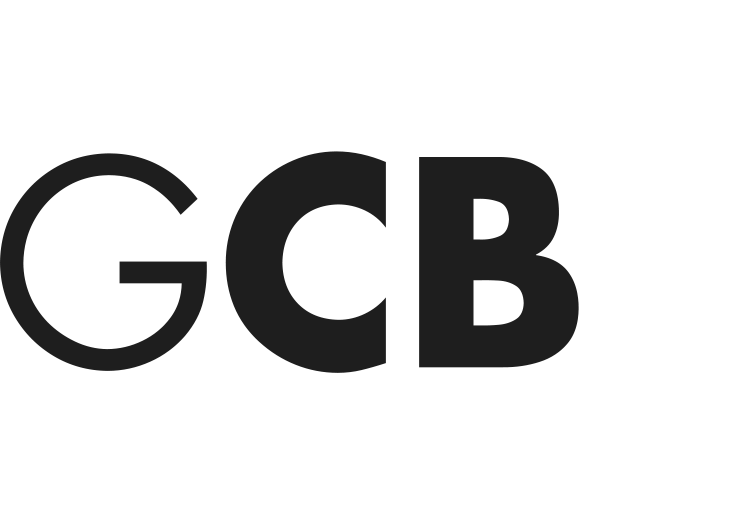GCB Kunstlexikon
PIERRE ALECHINSKY
KUNSTWERKE PIERRE ALECHINSKY
Pierre Alechinsky | Brahms | Symphony No.3 – Poco Allegretto | inesvigo | Bruselas, 1927 | Pintor y grabador belga | Estudia en la École Nationale Superieure d´Architecture et des Arts Décoratifs de Bruselas, mostrando especial interés por las técnicas de ilustración de libros y tipografía. En 1949 se une al Grupo Cobra y empieza a trabajar a seis manos con Karel Appel y Dotremont: lienzos al óleo donde formas y personajes se agitan dentro de grandes multitudes. Tras la disolución del grupo se traslada a París, donde estudia técnicas de grabado en el Studio 17 con S. W. Hayter, entrando en contacto con varios calígrafos de Kyoto. Rueda una película sobre el arte de la caligrafía en 1955. El estilo de Alechinsky es vigoroso, cercano a la abstracción expresiva, y son sus motivos decorativos una constante en su obra; con elementos llenos de fantasía que se acercan al surrealismo y cuya materia fluida es propicia a su surgimiento. En 1965 abandona el óleo por el acrílico y empieza a rodear sus pinturas con notas marginales, predellas, etc, instaurando multiplicidad de narraciones paralelas. Su obra ha sido objeto de numerosas exposiciones tanto en Europa como en Estados Unidos, y su última retrospectiva ha sido organizada por el Musées royaux des Beaux-Arts de Bélgica, en 2007 |
Musik | Titel Symphony No. 3 in F major, Op. 90: III. Poco allegretto |
Künstler Kyril Kondrashin | Moscow RTV Symphony Orchestra | Album
Brahms: Symphonies Nos. 3 & 4 | Lizenziert an YouTube durch
INgrooves (im Auftrag von Denon); Public Domain Compositions und 5 musikalische Verwertungsgesellschaften | YouTube
Exposition Pierre Alechinsky | Galerie Lelong Paris | Cette vidéo traite de Exposition Pierre Alechinsky | 2014-2015 | https://www.galerie-lelong.com/fr/ | YouTube
VIDEO | FILM PIERRE ALECHINSKY
2018 | Praemium Imperiale Laureate | Pierre Alechinsky | Painting | Jpan Forward | Pierre Alechinsky is an international contemporary artist, born in Brussels in 1927. He studied illustration techniques and typography at La Cambre school, Brussels. In 1949 he joined the avant-garde art group „CoBrA“ (1948-1951) and then moved to Paris. He had a close relationship with Shiryu Morita, the leader of the Bokubi group of calligraphers (Kyoto). He visited Japan for the first time in 1955 and made a documentary film: Japanese Calligraphy. Influenced by Walasse Ting, whom he met in Paris in 1954, he started to use India ink and Chinese pinsels. In 1965 he began working with acrylic painting with marginalia, on paper mounted on canvas. In 1977 he received the Andrew W. Mellon Prize at the Carnegie Institute, Pittsburgh Pennsylvania. Since the 1950’s he has developed a remarkable body of print work (etchings, lithographs). Many museum shows around the world have demonstrated the richness and variety of his work. Recently, he received French citizenship. During 2016-17, he held his first large-scale retrospective exhibitions in Tokyo and Osaka, commemorating the 150th anniversary of the establishment of diplomatic relations between Belgium and Japan. He is the first Belgian and French recipient of the Praemium Imperiale | Japan Forward is a new English-language news and opinion website run by the JAPAN Forward association Inc. | YouTube
Pierre Alechinsky | 2010 | Adan Montmartre | Pierre Alechinsky est un peintre, graveur, céramiste belge, qui réunit dans son œuvre expressionnisme et surréalisme. Il devient très rapidement l’un des acteurs majeurs du monde artistique belge de l’après-guerre. Après sa rencontre avec le poète Christian Dotremont, l’un des fondateurs du groupe CoBrA (mouvement créé en 1948, regroupant des artistes issus de Copenhague, Bruxelles et Amsterdam, qui préconise un retour à un art plus provocant, agressif et audacieux), il adhère en 1949 à ce mouvement d’avant-garde artistique, rejoignant Karel Appel, Constant, Jan Nieuwenhuys et Asger Jorn. Il participe aussitôt à la « Première exposition internationale CoBrA » au Stedelijk Museum. Agé de 83 ans il vit désormais dans le sud de la France | YouTube
Pierre Alechinsky | Reportage France 3 | Clac Chapelle des Pénitents |
Film de France 3 présentant l’Exposition Pierre Alechinsky organisée par le CLAC Art Contemporain en partenariat avec Elan d’Arts en 2016. CHAPELLE DES PENITENTS / LIEU D’ART CONTEMPORAIN Rue Saint-Jean 15110 Chaudes-Aigues / Cantal Exposition du 14 juillet au 15 août 2016 Un groupe d’estampes de très grand format sera présenté, accompagné de quelques « suites », en dialogue avec l’architecture de la Chapelle. Il y a ceux qui connaissent déjà Pierre Alechinsky, cet artiste contemporain qui a fait l’objet de rétrospectives majeures notamment au Guggenheim Museum à New York (1987), Jeu de Paume à Paris (1998), MNAM-Centre Pompidou (2004) et aux Musées Royaux des Beaux-Arts de Belgique (2008), à Bruxelles. Il est aussi connu pour la commande du Salon d’attente du Ministère de la Culture, rue de Valois à Paris (1985), et pour celle de la Rotonde de l’Assemblée Nationale, en 1993. Enfin, les amateurs du Quartier latin à Paris connaissent son grand arbre bleu, rue Descartes réalisé en 2001 dans le cadre du projet des « Murs peints de l’an 2000 ». Pour eux, l’exposition permettra de découvrir des oeuvres originales imprimées de très grands formats accompagnées de suites, couvrant la période 1974 à 2010 | YouTube
BIOGRAFIE PIERRE ALECHINSKY
GEBURTSJAHR | 1927 | GEBURTSORT | Brüssel
Der belgische Künstler Pierre Alechinsky wird als Sohn russisch-jüdischer Einwanderer in Brüssel geboren
Ab 1951 lebt Pierre Alechinsky mit seiner Frau Michèle „Micky“ Dendal in Paris
1955 Pierre Alechinsky reist nach Japan und dreht in Tokio und Kyoto einen Film („Calligraphie japonaise“) über die traditionelle Kalligraphie-Kunst
Ab 1963 lebt Pierre Alechinsky in Bougival bei Paris
1964 arbeitet Pierre Alechinsky mit Karel Appel und Walasse Ting an dem Film „Encre“ („Tinte“)
Pierre Alechinsky lebt und arbeitet in Bougival bei Paris und in Labosse (Picardie)
AUSBILDUNG PIERRE ALECHINSKY
1944 -1949 Pierre Alechinsky studiert an der Hochschule für Architektur und angewandte Kunst „La Cambre“ in Brüssel Typografie und Buchillustration
LEHRTÄTIGKEIT PIERRE ALECHINSKY
1983 – 1987 Lehrtätigkeit als Professor an der Ecole nationale supérieure des Beaux-Arts in Paris
MITGLIEDSCHAFTEN PIERRE ALECHINSKY
1947 Eintritt in die Künstlergruppe „Jeune Peinture Belge“
1949 – 1951 Pierre Alechinsky gehört mit Karel Appel, Constant, Asger Jorn, Corneille, Christian Dotremont, Joseph Noiret zur Gruppe der CoBrA-Künstler
AUSZEICHNUNGEN PIERRE ALECHINSKY
SAMMLUNGEN PIERRE ALECHINSKY
AUSSTELLUNGEN PIERRE ALECHINSKY
EINZELAUSSTELLUNGEN AUSWAHL
1954 erste Einzelausstellung seiner Werke in Paris
GRUPPENAUSSTELLUNGEN
PROJEKTE / SYMPOSIEN
WERKBESCHREIBUNG PIERRE ALECHINSKY
SCHWERPUNKTE | MEDIEN
Ölgemälden | großformatige Tuschezeichnungen auf Chinapapier, die anschließend auf Leinwand aufgezogen werden | Grafiken | Skulpturen | Keramiken | Pierre Alechinsky ist auch als Drehbuchautor tätig
STIL
Tachismus | lyrischen Abstraktion |Informel
1950 Pierre Alechinsky beschäftigt sich mit orientalischer und asiatischer Kalligraphie | Pierre Alechinsky arbeitet für die japanische Kalligraphie-Zeitschrift „Bokubi“ | ab 1965 verwendet Pierre Alechinsky ausschließlich Acrylfarben und Tusche | Im Gemälde „Central Park“ fügt Pierr Alechinsky auch erstmals seine „remarques marginales (Randnotizen und ornamentale Randverzierungen mit Tusche) ein, die fortan ein charakteristisches Gestaltungsmittel seiner Bilder sind. Diese umrahmen das zentrale Bildmotiv
1954 Pierre Alechinsky trifft den chinesischen Künstler Walasse Ting und intensiviert durch ihn den Umgang mit der Kunst der asiatischen Tuschmalerei
THEMEN | MOTIVE
Mit vielen kulturellen Anklängen spannt Pierre Alechinsky den Bogen zwischen der westeuropäischen und asiatischen Kultur
DEFINITION | BESCHREIBUNG | MERKMALE
STICHWORTE PIERRE ALECHINSKY
ZITATE PIERRE ALECHINSKY
TEXT / BIBLIOGRAPHIE PIERRE ALECHINSKY
LINKS PIERRE ALECHINSKY
PIERRE ALECHINSKY
KUNSTWERKE PIERRE ALECHINSKY
Pierre Alechinsky | Brahms | Symphony No.3 – Poco Allegretto | inesvigo | Bruselas, 1927 | Pintor y grabador belga | Estudia en la École Nationale Superieure d´Architecture et des Arts Décoratifs de Bruselas, mostrando especial interés por las técnicas de ilustración de libros y tipografía. En 1949 se une al Grupo Cobra y empieza a trabajar a seis manos con Karel Appel y Dotremont: lienzos al óleo donde formas y personajes se agitan dentro de grandes multitudes. Tras la disolución del grupo se traslada a París, donde estudia técnicas de grabado en el Studio 17 con S. W. Hayter, entrando en contacto con varios calígrafos de Kyoto. Rueda una película sobre el arte de la caligrafía en 1955. El estilo de Alechinsky es vigoroso, cercano a la abstracción expresiva, y son sus motivos decorativos una constante en su obra; con elementos llenos de fantasía que se acercan al surrealismo y cuya materia fluida es propicia a su surgimiento. En 1965 abandona el óleo por el acrílico y empieza a rodear sus pinturas con notas marginales, predellas, etc, instaurando multiplicidad de narraciones paralelas. Su obra ha sido objeto de numerosas exposiciones tanto en Europa como en Estados Unidos, y su última retrospectiva ha sido organizada por el Musées royaux des Beaux-Arts de Bélgica, en 2007 |
Musik | Titel Symphony No. 3 in F major, Op. 90: III. Poco allegretto |
Künstler Kyril Kondrashin | Moscow RTV Symphony Orchestra | Album
Brahms: Symphonies Nos. 3 & 4 | Lizenziert an YouTube durch
INgrooves (im Auftrag von Denon); Public Domain Compositions und 5 musikalische Verwertungsgesellschaften | YouTube
Exposition Pierre Alechinsky | Galerie Lelong Paris | Cette vidéo traite de Exposition Pierre Alechinsky | 2014-2015 | https://www.galerie-lelong.com/fr/ | YouTube
VIDEO | FILM PIERRE ALECHINSKY
2018 | Praemium Imperiale Laureate | Pierre Alechinsky | Painting | Jpan Forward | Pierre Alechinsky is an international contemporary artist, born in Brussels in 1927. He studied illustration techniques and typography at La Cambre school, Brussels. In 1949 he joined the avant-garde art group „CoBrA“ (1948-1951) and then moved to Paris. He had a close relationship with Shiryu Morita, the leader of the Bokubi group of calligraphers (Kyoto). He visited Japan for the first time in 1955 and made a documentary film: Japanese Calligraphy. Influenced by Walasse Ting, whom he met in Paris in 1954, he started to use India ink and Chinese pinsels. In 1965 he began working with acrylic painting with marginalia, on paper mounted on canvas. In 1977 he received the Andrew W. Mellon Prize at the Carnegie Institute, Pittsburgh Pennsylvania. Since the 1950’s he has developed a remarkable body of print work (etchings, lithographs). Many museum shows around the world have demonstrated the richness and variety of his work. Recently, he received French citizenship. During 2016-17, he held his first large-scale retrospective exhibitions in Tokyo and Osaka, commemorating the 150th anniversary of the establishment of diplomatic relations between Belgium and Japan. He is the first Belgian and French recipient of the Praemium Imperiale | Japan Forward is a new English-language news and opinion website run by the JAPAN Forward association Inc. | YouTube
Pierre Alechinsky | 2010 | Adan Montmartre | Pierre Alechinsky est un peintre, graveur, céramiste belge, qui réunit dans son œuvre expressionnisme et surréalisme. Il devient très rapidement l’un des acteurs majeurs du monde artistique belge de l’après-guerre. Après sa rencontre avec le poète Christian Dotremont, l’un des fondateurs du groupe CoBrA (mouvement créé en 1948, regroupant des artistes issus de Copenhague, Bruxelles et Amsterdam, qui préconise un retour à un art plus provocant, agressif et audacieux), il adhère en 1949 à ce mouvement d’avant-garde artistique, rejoignant Karel Appel, Constant, Jan Nieuwenhuys et Asger Jorn. Il participe aussitôt à la « Première exposition internationale CoBrA » au Stedelijk Museum. Agé de 83 ans il vit désormais dans le sud de la France | YouTube
Pierre Alechinsky | Reportage France 3 | Clac Chapelle des Pénitents |
Film de France 3 présentant l’Exposition Pierre Alechinsky organisée par le CLAC Art Contemporain en partenariat avec Elan d’Arts en 2016. CHAPELLE DES PENITENTS / LIEU D’ART CONTEMPORAIN Rue Saint-Jean 15110 Chaudes-Aigues / Cantal Exposition du 14 juillet au 15 août 2016 Un groupe d’estampes de très grand format sera présenté, accompagné de quelques « suites », en dialogue avec l’architecture de la Chapelle. Il y a ceux qui connaissent déjà Pierre Alechinsky, cet artiste contemporain qui a fait l’objet de rétrospectives majeures notamment au Guggenheim Museum à New York (1987), Jeu de Paume à Paris (1998), MNAM-Centre Pompidou (2004) et aux Musées Royaux des Beaux-Arts de Belgique (2008), à Bruxelles. Il est aussi connu pour la commande du Salon d’attente du Ministère de la Culture, rue de Valois à Paris (1985), et pour celle de la Rotonde de l’Assemblée Nationale, en 1993. Enfin, les amateurs du Quartier latin à Paris connaissent son grand arbre bleu, rue Descartes réalisé en 2001 dans le cadre du projet des « Murs peints de l’an 2000 ». Pour eux, l’exposition permettra de découvrir des oeuvres originales imprimées de très grands formats accompagnées de suites, couvrant la période 1974 à 2010 | YouTube
BIOGRAFIE PIERRE ALECHINSKY
GEBURTSJAHR | 1927 | GEBURTSORT | Brüssel
Der belgische Künstler Pierre Alechinsky wird als Sohn russisch-jüdischer Einwanderer in Brüssel geboren
Ab 1951 lebt Pierre Alechinsky mit seiner Frau Michèle „Micky“ Dendal in Paris
1955 Pierre Alechinsky reist nach Japan und dreht in Tokio und Kyoto einen Film („Calligraphie japonaise“) über die traditionelle Kalligraphie-Kunst
Ab 1963 lebt Pierre Alechinsky in Bougival bei Paris
1964 arbeitet Pierre Alechinsky mit Karel Appel und Walasse Ting an dem Film „Encre“ („Tinte“)
Pierre Alechinsky lebt und arbeitet in Bougival bei Paris und in Labosse (Picardie)
AUSBILDUNG PIERRE ALECHINSKY
1944 -1949 Pierre Alechinsky studiert an der Hochschule für Architektur und angewandte Kunst „La Cambre“ in Brüssel Typografie und Buchillustration
LEHRTÄTIGKEIT PIERRE ALECHINSKY
1983 – 1987 Lehrtätigkeit als Professor an der Ecole nationale supérieure des Beaux-Arts in Paris
MITGLIEDSCHAFTEN PIERRE ALECHINSKY
1947 Eintritt in die Künstlergruppe „Jeune Peinture Belge“
1949 – 1951 Pierre Alechinsky gehört mit Karel Appel, Constant, Asger Jorn, Corneille, Christian Dotremont, Joseph Noiret zur Gruppe der CoBrA-Künstler
AUSZEICHNUNGEN PIERRE ALECHINSKY
SAMMLUNGEN PIERRE ALECHINSKY
AUSSTELLUNGEN PIERRE ALECHINSKY
EINZELAUSSTELLUNGEN AUSWAHL
1954 erste Einzelausstellung seiner Werke in Paris
GRUPPENAUSSTELLUNGEN
PROJEKTE / SYMPOSIEN
WERKBESCHREIBUNG PIERRE ALECHINSKY
SCHWERPUNKTE | MEDIEN
Ölgemälden | großformatige Tuschezeichnungen auf Chinapapier, die anschließend auf Leinwand aufgezogen werden | Grafiken | Skulpturen | Keramiken | Pierre Alechinsky ist auch als Drehbuchautor tätig
STIL
Tachismus | lyrischen Abstraktion |Informel
1950 Pierre Alechinsky beschäftigt sich mit orientalischer und asiatischer Kalligraphie | Pierre Alechinsky arbeitet für die japanische Kalligraphie-Zeitschrift „Bokubi“ | ab 1965 verwendet Pierre Alechinsky ausschließlich Acrylfarben und Tusche | Im Gemälde „Central Park“ fügt Pierr Alechinsky auch erstmals seine „remarques marginales (Randnotizen und ornamentale Randverzierungen mit Tusche) ein, die fortan ein charakteristisches Gestaltungsmittel seiner Bilder sind. Diese umrahmen das zentrale Bildmotiv
1954 Pierre Alechinsky trifft den chinesischen Künstler Walasse Ting und intensiviert durch ihn den Umgang mit der Kunst der asiatischen Tuschmalerei
THEMEN | MOTIVE
Mit vielen kulturellen Anklängen spannt Pierre Alechinsky den Bogen zwischen der westeuropäischen und asiatischen Kultur
DEFINITION | BESCHREIBUNG | MERKMALE
STICHWORTE PIERRE ALECHINSKY
ZITATE PIERRE ALECHINSKY
TEXT / BIBLIOGRAPHIE PIERRE ALECHINSKY
LINKS PIERRE ALECHINSKY
PIERRE ALECHINSKY
KUNSTWERKE PIERRE ALECHINSKY
Pierre Alechinsky | Brahms | Symphony No.3 – Poco Allegretto | inesvigo | Bruselas, 1927 | Pintor y grabador belga | Estudia en la École Nationale Superieure d´Architecture et des Arts Décoratifs de Bruselas, mostrando especial interés por las técnicas de ilustración de libros y tipografía. En 1949 se une al Grupo Cobra y empieza a trabajar a seis manos con Karel Appel y Dotremont: lienzos al óleo donde formas y personajes se agitan dentro de grandes multitudes. Tras la disolución del grupo se traslada a París, donde estudia técnicas de grabado en el Studio 17 con S. W. Hayter, entrando en contacto con varios calígrafos de Kyoto. Rueda una película sobre el arte de la caligrafía en 1955. El estilo de Alechinsky es vigoroso, cercano a la abstracción expresiva, y son sus motivos decorativos una constante en su obra; con elementos llenos de fantasía que se acercan al surrealismo y cuya materia fluida es propicia a su surgimiento. En 1965 abandona el óleo por el acrílico y empieza a rodear sus pinturas con notas marginales, predellas, etc, instaurando multiplicidad de narraciones paralelas. Su obra ha sido objeto de numerosas exposiciones tanto en Europa como en Estados Unidos, y su última retrospectiva ha sido organizada por el Musées royaux des Beaux-Arts de Bélgica, en 2007 |
Musik | Titel Symphony No. 3 in F major, Op. 90: III. Poco allegretto |
Künstler Kyril Kondrashin | Moscow RTV Symphony Orchestra | Album
Brahms: Symphonies Nos. 3 & 4 | Lizenziert an YouTube durch
INgrooves (im Auftrag von Denon); Public Domain Compositions und 5 musikalische Verwertungsgesellschaften | YouTube
Exposition Pierre Alechinsky | Galerie Lelong Paris | Cette vidéo traite de Exposition Pierre Alechinsky | 2014-2015 | https://www.galerie-lelong.com/fr/ | YouTube
VIDEO | FILM PIERRE ALECHINSKY
2018 | Praemium Imperiale Laureate | Pierre Alechinsky | Painting | Jpan Forward | Pierre Alechinsky is an international contemporary artist, born in Brussels in 1927. He studied illustration techniques and typography at La Cambre school, Brussels. In 1949 he joined the avant-garde art group „CoBrA“ (1948-1951) and then moved to Paris. He had a close relationship with Shiryu Morita, the leader of the Bokubi group of calligraphers (Kyoto). He visited Japan for the first time in 1955 and made a documentary film: Japanese Calligraphy. Influenced by Walasse Ting, whom he met in Paris in 1954, he started to use India ink and Chinese pinsels. In 1965 he began working with acrylic painting with marginalia, on paper mounted on canvas. In 1977 he received the Andrew W. Mellon Prize at the Carnegie Institute, Pittsburgh Pennsylvania. Since the 1950’s he has developed a remarkable body of print work (etchings, lithographs). Many museum shows around the world have demonstrated the richness and variety of his work. Recently, he received French citizenship. During 2016-17, he held his first large-scale retrospective exhibitions in Tokyo and Osaka, commemorating the 150th anniversary of the establishment of diplomatic relations between Belgium and Japan. He is the first Belgian and French recipient of the Praemium Imperiale | Japan Forward is a new English-language news and opinion website run by the JAPAN Forward association Inc. | YouTube
Pierre Alechinsky | 2010 | Adan Montmartre | Pierre Alechinsky est un peintre, graveur, céramiste belge, qui réunit dans son œuvre expressionnisme et surréalisme. Il devient très rapidement l’un des acteurs majeurs du monde artistique belge de l’après-guerre. Après sa rencontre avec le poète Christian Dotremont, l’un des fondateurs du groupe CoBrA (mouvement créé en 1948, regroupant des artistes issus de Copenhague, Bruxelles et Amsterdam, qui préconise un retour à un art plus provocant, agressif et audacieux), il adhère en 1949 à ce mouvement d’avant-garde artistique, rejoignant Karel Appel, Constant, Jan Nieuwenhuys et Asger Jorn. Il participe aussitôt à la « Première exposition internationale CoBrA » au Stedelijk Museum. Agé de 83 ans il vit désormais dans le sud de la France | YouTube
Pierre Alechinsky | Reportage France 3 | Clac Chapelle des Pénitents |
Film de France 3 présentant l’Exposition Pierre Alechinsky organisée par le CLAC Art Contemporain en partenariat avec Elan d’Arts en 2016. CHAPELLE DES PENITENTS / LIEU D’ART CONTEMPORAIN Rue Saint-Jean 15110 Chaudes-Aigues / Cantal Exposition du 14 juillet au 15 août 2016 Un groupe d’estampes de très grand format sera présenté, accompagné de quelques « suites », en dialogue avec l’architecture de la Chapelle. Il y a ceux qui connaissent déjà Pierre Alechinsky, cet artiste contemporain qui a fait l’objet de rétrospectives majeures notamment au Guggenheim Museum à New York (1987), Jeu de Paume à Paris (1998), MNAM-Centre Pompidou (2004) et aux Musées Royaux des Beaux-Arts de Belgique (2008), à Bruxelles. Il est aussi connu pour la commande du Salon d’attente du Ministère de la Culture, rue de Valois à Paris (1985), et pour celle de la Rotonde de l’Assemblée Nationale, en 1993. Enfin, les amateurs du Quartier latin à Paris connaissent son grand arbre bleu, rue Descartes réalisé en 2001 dans le cadre du projet des « Murs peints de l’an 2000 ». Pour eux, l’exposition permettra de découvrir des oeuvres originales imprimées de très grands formats accompagnées de suites, couvrant la période 1974 à 2010 | YouTube
BIOGRAFIE PIERRE ALECHINSKY
GEBURTSJAHR | 1927 | GEBURTSORT | Brüssel
Der belgische Künstler Pierre Alechinsky wird als Sohn russisch-jüdischer Einwanderer in Brüssel geboren
Ab 1951 lebt Pierre Alechinsky mit seiner Frau Michèle „Micky“ Dendal in Paris
1955 Pierre Alechinsky reist nach Japan und dreht in Tokio und Kyoto einen Film („Calligraphie japonaise“) über die traditionelle Kalligraphie-Kunst
Ab 1963 lebt Pierre Alechinsky in Bougival bei Paris
1964 arbeitet Pierre Alechinsky mit Karel Appel und Walasse Ting an dem Film „Encre“ („Tinte“)
Pierre Alechinsky lebt und arbeitet in Bougival bei Paris und in Labosse (Picardie)
AUSBILDUNG PIERRE ALECHINSKY
1944 -1949 Pierre Alechinsky studiert an der Hochschule für Architektur und angewandte Kunst „La Cambre“ in Brüssel Typografie und Buchillustration
LEHRTÄTIGKEIT PIERRE ALECHINSKY
1983 – 1987 Lehrtätigkeit als Professor an der Ecole nationale supérieure des Beaux-Arts in Paris
MITGLIEDSCHAFTEN PIERRE ALECHINSKY
1947 Eintritt in die Künstlergruppe „Jeune Peinture Belge“
1949 – 1951 Pierre Alechinsky gehört mit Karel Appel, Constant, Asger Jorn, Corneille, Christian Dotremont, Joseph Noiret zur Gruppe der CoBrA-Künstler
AUSZEICHNUNGEN PIERRE ALECHINSKY
SAMMLUNGEN PIERRE ALECHINSKY
AUSSTELLUNGEN PIERRE ALECHINSKY
EINZELAUSSTELLUNGEN AUSWAHL
1954 erste Einzelausstellung seiner Werke in Paris
GRUPPENAUSSTELLUNGEN
PROJEKTE / SYMPOSIEN
WERKBESCHREIBUNG PIERRE ALECHINSKY
SCHWERPUNKTE | MEDIEN
Ölgemälden | großformatige Tuschezeichnungen auf Chinapapier, die anschließend auf Leinwand aufgezogen werden | Grafiken | Skulpturen | Keramiken | Pierre Alechinsky ist auch als Drehbuchautor tätig
STIL
Tachismus | lyrischen Abstraktion |Informel
1950 Pierre Alechinsky beschäftigt sich mit orientalischer und asiatischer Kalligraphie | Pierre Alechinsky arbeitet für die japanische Kalligraphie-Zeitschrift „Bokubi“ | ab 1965 verwendet Pierre Alechinsky ausschließlich Acrylfarben und Tusche | Im Gemälde „Central Park“ fügt Pierr Alechinsky auch erstmals seine „remarques marginales (Randnotizen und ornamentale Randverzierungen mit Tusche) ein, die fortan ein charakteristisches Gestaltungsmittel seiner Bilder sind. Diese umrahmen das zentrale Bildmotiv
1954 Pierre Alechinsky trifft den chinesischen Künstler Walasse Ting und intensiviert durch ihn den Umgang mit der Kunst der asiatischen Tuschmalerei
THEMEN | MOTIVE
Mit vielen kulturellen Anklängen spannt Pierre Alechinsky den Bogen zwischen der westeuropäischen und asiatischen Kultur
DEFINITION | BESCHREIBUNG | MERKMALE
STICHWORTE PIERRE ALECHINSKY
ZITATE PIERRE ALECHINSKY
TEXT / BIBLIOGRAPHIE PIERRE ALECHINSKY
LINKS PIERRE ALECHINSKY



